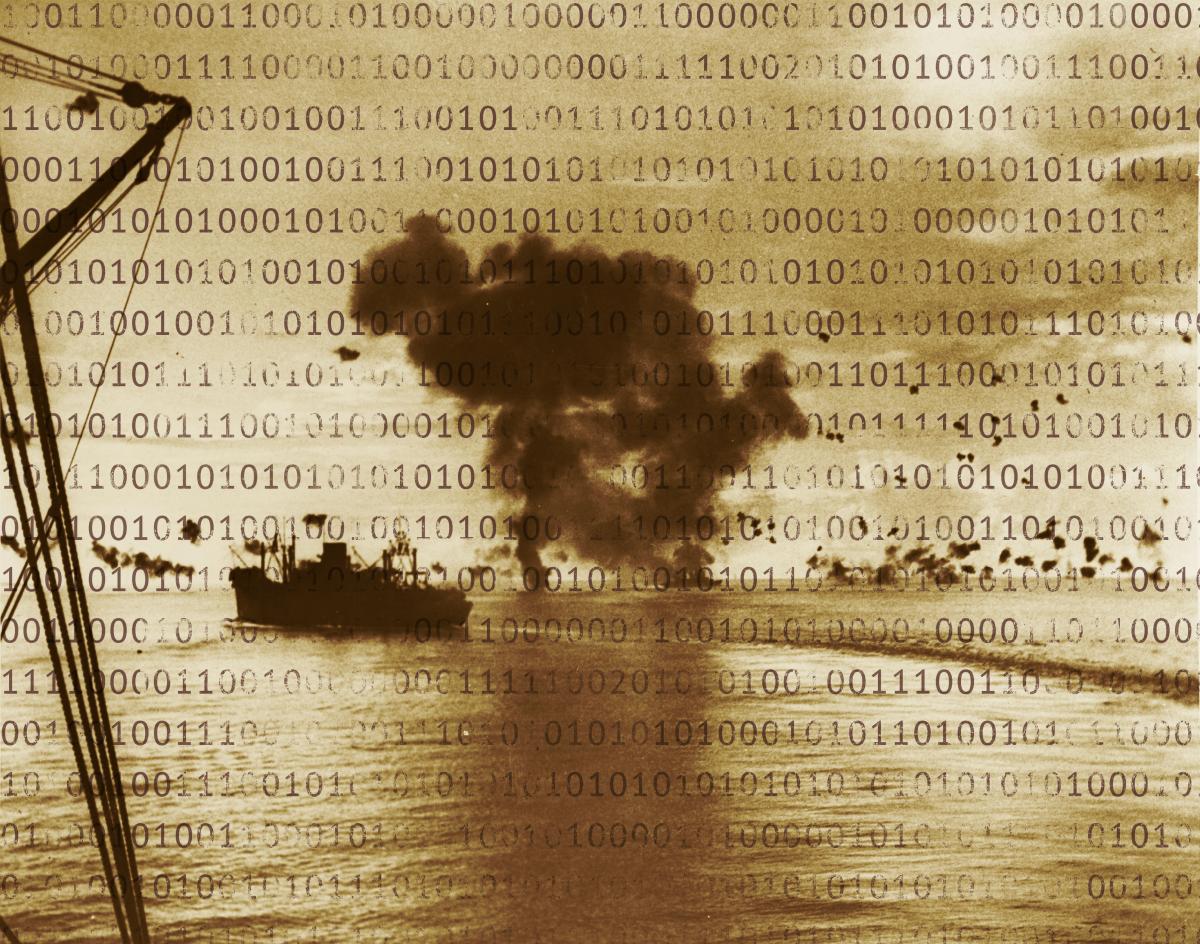By Dr. Harlan K. Ullman
 Despite the famous U.S. Navy fleet exercises of the 1930s, when World War II broke out, too many American naval commanders did not fully understand how to use radar effectively. Nor had many studied Japanese naval tactics and the lethality of the Long Lance torpedo. Those failures were costly.
Despite the famous U.S. Navy fleet exercises of the 1930s, when World War II broke out, too many American naval commanders did not fully understand how to use radar effectively. Nor had many studied Japanese naval tactics and the lethality of the Long Lance torpedo. Those failures were costly.
Today, is the Navy better prepared in its understanding of cyber warfare and employment of cyber weapons than it was in 1942 regarding radar and enemy capability?
Consider the naval battle for Guadalcanal beginning in August 1942. More than 5,000 sailors died in action at sea, and about 1,600 Marines were killed ashore. The U.S. Navy was repeatedly battered by the Imperial Japanese Navy. A major reason was the failure to employ radar effectively. The battle of Savo Island that August was a precursor of the disasters that lay ahead.
While Rear Admiral Norman Scott used radar to prevail at Cape Esperance in October, Rear Admiral Daniel Callaghan, several numbers his senior, did not when in command. Both admirals died in action the night of 13-14 November; Scott was killed on board the USS Atlanta (CL-51) by friendly fire from the flag ship USS San Francisco (CA-38). Of Callaghan’s five cruisers and three destroyers, only three escaped being sunk or badly damaged.
Two weeks later, the inexperienced Rear Admiral Carleton Wright suffered even greater losses at the Battle of Tassafaronga. He, too, did not fully appreciate radar. Ultimately, the U.S. Navy won at Guadalcanal, but it took until mid-to-late 1943 for the fleet to assimilate this transformational technology and two civilians, who would become renowned science fiction writers, Robert Heinlein and Issac Asimov, were tasked by Admiral Ernest King to help invent the combat information center (CIC).
Today, cyber is better known throughout the fleet than radar was in 1942. But how prepared are the naval services for cyber war? For example, who has seen or read the March 2019 Secretary of the Navy Cybersecurity Readiness Review and its key finding: “This is just not another challenge to be resourced. The failure to protect Navy and Marine Corps information systems and IP [intellectual property] is an existential threat to their existence.” (From page 1 of the report, emphasis added.)
Similarly, do the naval services fully appreciate Chinese and Russian uses of information warfare? More broadly, why after many years does the nation still not have an effective cyber strategy? Indeed, there is no cyber “czar” in the White House. These gaps do not help the Department of Defense in dealing with cyber.
The Navy must ensure that failure to understand and exploit cyber does not create future Guadalcanal-like naval defeats. The first step is to define the cyber domain so that efforts incorporate the full range of digitization, including the internet, information systems, networks, and information warfare. It must include offense and defense. Without defining the battlefield, producing effective solutions will be elusive at best.
A good analogy is the international monetary system. As with cyber, it is ubiquitous; vital to the functioning of global and local economies; vulnerable to theft, cheating, and scams; and disruption is catastrophic—as the Great Depression of the 1920s and ‘30s and the financial meltdown of 2008 showed.
Second, to ensure fleet assimilation of cyber and digitization, far more than good hygiene is required. Without cyber command and control, success in a modern distributed multi-domain battlefield is unobtainable. Hence, cyber must be integrated at all levels of training and education and become a fitness report item regardless of rating or rank.
Third, well-resourced cyber centers must be established at each of the major naval educational institutions. The Naval Academy has a well-funded center. The Naval War College, Naval Postgraduate School, and Marine Corps University do not and must become centers of cyber excellence.
Finally, to implement the SecNav Cybersecurity Review’s recommendations, a fifth assistant secretary of the Navy has been requested. This may be necessary; it will not be sufficient. A uniformed four-star admiral must be tasked with ensuring the naval services are prepared for cyber and information warfare. This may be too big an additional job for Commander, Fleet Forces, to tackle.
In 1942, failure to use radar effectively and to understand Japanese tactics cost many lives, ships, and aircraft. A cyber failure against a 21st-century peer competitor could be far worse. As the recent Secretary of the Navy review implies, it could even cause the United States to lose a war.
No comments:
Post a Comment